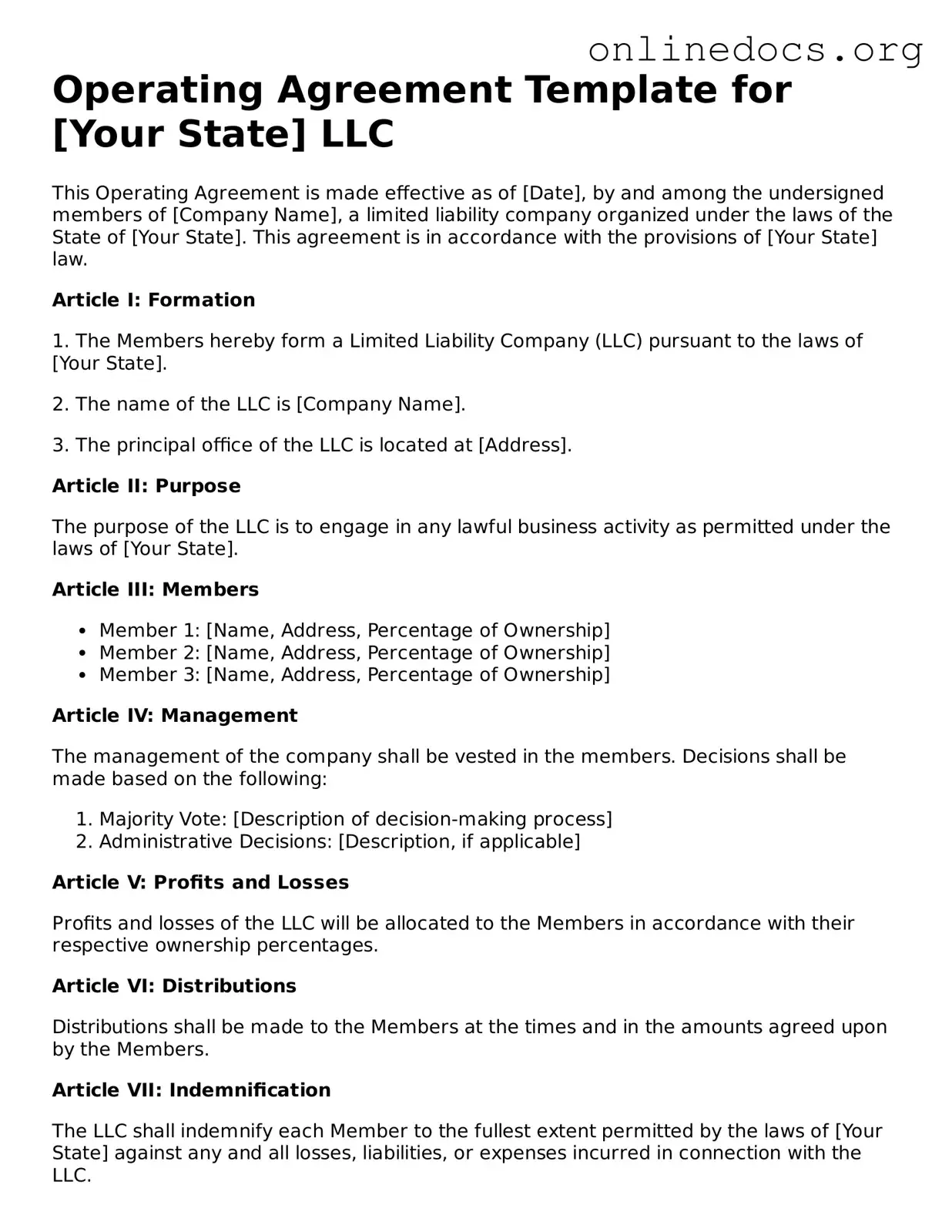The Operating Agreement is similar to the Partnership Agreement, which outlines the terms and conditions under which a partnership operates. Both documents serve as foundational agreements for business entities, detailing the roles, responsibilities, and profit-sharing arrangements among partners. While an Operating Agreement is specific to limited liability companies (LLCs), a Partnership Agreement is tailored for partnerships, ensuring clarity and minimizing disputes among partners regarding their contributions and obligations.
Another comparable document is the Bylaws, commonly used by corporations. Bylaws establish the internal rules governing a corporation's operations, including the structure of the board of directors, the process for holding meetings, and the voting rights of shareholders. Like an Operating Agreement, Bylaws help define the governance framework, although Bylaws are specific to corporations, while the Operating Agreement is for LLCs.
The Shareholder Agreement is also similar, as it governs the relationship between shareholders in a corporation. This document addresses issues such as share transfers, voting rights, and management responsibilities. Similar to an Operating Agreement, it aims to protect the interests of all parties involved and provide a clear structure for decision-making within the entity.
In addition to these agreements, understanding the proper documentation is vital, especially when it comes to transferring ownership of assets. For instance, the All Templates PDF offers essential templates that can streamline the process, ensuring that both parties are protected and all transaction details are clearly recorded.
The Joint Venture Agreement shares similarities with an Operating Agreement as well. This document outlines the terms of collaboration between two or more parties in a specific business endeavor. Both agreements define the contributions of each party, profit distribution, and the duration of the partnership. However, a Joint Venture Agreement is typically limited to a specific project, while an Operating Agreement governs the ongoing operations of an LLC.
A Limited Partnership Agreement is another document that parallels the Operating Agreement. This agreement details the roles of general and limited partners in a limited partnership. It specifies the management structure, profit-sharing, and responsibilities of each partner. While an Operating Agreement is used for LLCs, a Limited Partnership Agreement serves a similar purpose for limited partnerships, providing clarity and structure to the business relationship.
The Membership Agreement is akin to an Operating Agreement in that it outlines the rights and obligations of members in a multi-member LLC. This document details aspects such as capital contributions, management responsibilities, and distribution of profits. Both agreements aim to create a clear understanding among members, ensuring smooth operations and minimizing conflicts.
The Employment Agreement can also be viewed as similar, particularly when it comes to outlining the roles and responsibilities of employees within an organization. While an Operating Agreement focuses on the relationships among owners, an Employment Agreement addresses the employer-employee dynamic, detailing job duties, compensation, and termination conditions. Both documents are essential for establishing clear expectations within a business.
The Non-Disclosure Agreement (NDA) bears some resemblance as well, especially concerning the protection of sensitive information. While the Operating Agreement focuses on the internal workings of a business, an NDA ensures that all parties involved agree to keep proprietary information confidential. Both documents help to safeguard the interests of the business and its members.
Lastly, the Franchise Agreement is comparable in that it governs the relationship between a franchisor and a franchisee. This document outlines the rights and obligations of both parties, including fees, operational guidelines, and marketing strategies. While it serves a different type of business structure, the Franchise Agreement, like the Operating Agreement, aims to create a clear framework for the operation and management of the business.
